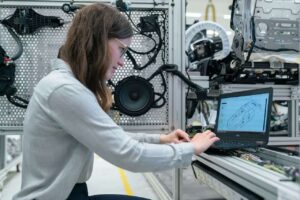
Home / EV Charging News / Innovations in Battery Swapping Technology for Seamless Electric Vehicle Charging
As the world moves towards sustainable transportation solutions, electric vehicles (EVs) have emerged as a promising alternative to traditional internal combustion engine vehicles. However, one of the significant challenges hindering the widespread adoption of EVs is the issue of charging infrastructure. Traditional charging methods, such as plug-in charging, often suffer from long charging times and limited availability of charging stations. To address these challenges, innovative solutions like battery swapping technology have gained traction in recent years. This article explores the advancements in battery swapping technology and its potential to revolutionize EV charging infrastructure.
Battery swapping technology involves the quick exchange of depleted batteries in electric vehicles with fully charged ones, eliminating the need for time-consuming charging. This concept is not entirely new and has been experimented with in the past. However, recent innovations have made battery swapping more efficient, convenient, and economically viable.
Despite the challenges, battery swapping technology holds immense potential to transform the EV charging landscape. Continued advancements in automation, standardization, and battery technology are expected to drive down costs and improve the efficiency of swapping stations. As EV adoption continues to rise globally, battery swapping could emerge as a viable complement to traditional charging infrastructure, offering EV owners a convenient and accessible charging solution.
Innovations in battery swapping technology have the potential to address the challenges associated with traditional EV charging methods, offering a faster, more accessible, and scalable solution for powering electric vehicles. With ongoing advancements and industry collaborations, battery swapping could play a significant role in accelerating the transition towards sustainable transportation systems, making electric mobility a practical and viable choice for consumers worldwide.
$4,150.00 Original price was: $4,150.00.$3,990.00Current price is: $3,990.00.
$10,690.00 – $11,390.00

Your Power Management Partner for Over 25 Years Future Generations Depend on Our Decisions Today ™
2024 © All rights reserved by CyberSwitching